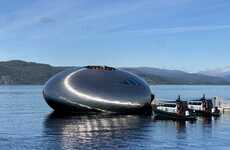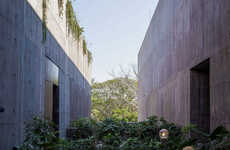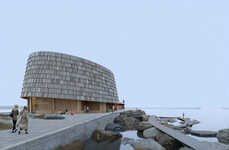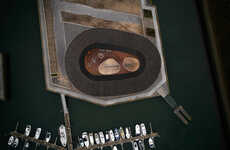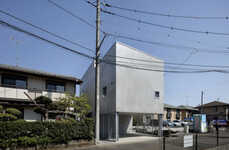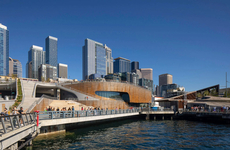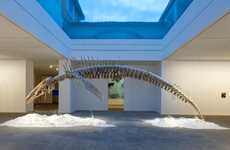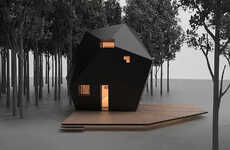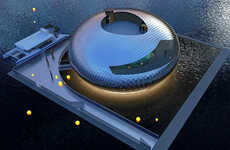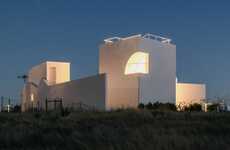
Marketex Marine Designed the Salmon Eye Aquaculture Center
Elena Rahman — February 3, 2022 — Eco
References: marketexmarine.net & yankodesign
Kvorning is the designer behind the Salon Eye Aquaculture exhibition center. The structure is shaped like a dead fish's eye to allude to the increasing need to project aquatic and marine life. The exhibition center floats on the Hardangerfjord, Norway's second-longest fjord and the fifth-longest in the world.
Salmon Eye's location is set on Norway's highest concentration of salmon farms, making it aptly named. Visitors can learn more about food production in the sea and local challenges and solutions through the projections on the walls inside the Salmon Eye. Additionally, the exhibit includes interactive displays. Thus far, the exhibit is still in its planning phase. Once it is built, the structure will be covered with 9,500 high-grade stainless steel plates designed like scales.
Image Credit: Kvorning
Salmon Eye's location is set on Norway's highest concentration of salmon farms, making it aptly named. Visitors can learn more about food production in the sea and local challenges and solutions through the projections on the walls inside the Salmon Eye. Additionally, the exhibit includes interactive displays. Thus far, the exhibit is still in its planning phase. Once it is built, the structure will be covered with 9,500 high-grade stainless steel plates designed like scales.
Image Credit: Kvorning
Trend Themes
1. Aquatic-life Focused Exhibits - Designing aquatic exhibits for visitors that focus on marine life improves engagement and provides innovative educational opportunities.
2. Interactive Exhibitions - The inclusion of interactive displays provides visitors with new educational opportunities that incorporate multimedia, thus improving knowledge retention.
3. Living Architecture - Architecture can be designed to resemble nature, creating an aesthetic experience that ties into sustainability and environmentalism, and industry professionals can take advantage of this demand for ecologically sustainable designs.
Industry Implications
1. Entertainment and Tourism - Designing aquatic exhibits for entertainment and tourism increases traffic flow and encourages repeat visitors.
2. Aquaculture and Food Production - Developing exhibits and technologies that educate visitors on the food production of marine life can benefit the food and aquaculture industry by creating a new path for product advertisement that incorporates education and entertainment.
3. Architecture and Construction - Designing innovative architecture and construction for aquatic exhibits requires the interdisciplinary knowledge of industry professionals from architecture, engineering, and construction to create groundbreaking designs.
4.1
Score
Popularity
Activity
Freshness

